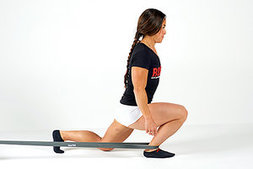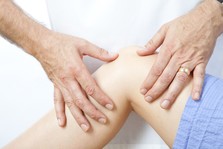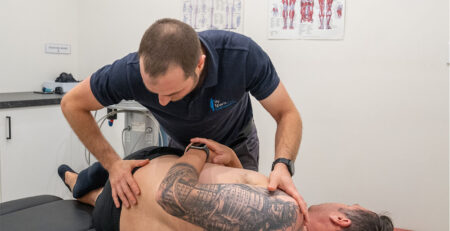4 Ways to improve knee pain and Prevent knee Injuries with Chiropractic
The knee’s play a crucial role in most athletic activities such as running and jumping.
They’re arguably the most common sports related injuries, because of their location and complexity (1). Most knee injuries stem from poor running techniques where improper loading occurs, causing excess stress on surrounding ligaments and aggravation of certain tendons. It is not uncommon for knee pain to simply go away and eventually return if untreated after a few weeks or months.
Some of the most common causes of knee pain that we see in our practice are:
patello-femoral pain syndrome (PFPS),
ACL ruptures
ITB Syndrome common in runners,
Osgood Schlatter and OCD (in adolescence)
Tendinitis/tendinopathy.
Now, My Sports Chiropractor is an evidence based practice, so we always want to pass on the latest evidence to you about the significant causes of knee pain. We always aim to identify the underlying causes of your pain.
WHY DOES THIS MATTER?
The evidence regarding the causes of knee pain points to:
Quadricep Strength & Hip Mechanics!
Weak Quads (particularly in women) (2) and underactive hip stabilisers particularly the hip abductors and external rotators i.e the glute muscles (3) are serial culprits. Weakness in these muscles often lead to the “collapse” in the knee during running, squatting and jumping.

So, putting all this together, we can begin to understand that we need to do exercises that promote activation of the Hip abductors, external rotators and Quads!

4 tips and exercises to improve knee pain:
- Glute Activation Exercises – Bridges – these particular exercises will help to boost hip abductor and external rotator activity. Alternatively, to focus even more on the glutes, raise your feet, leaving only your heels touching the ground.
- Single Leg Balance – the knee is the pivot between the ground and the trunk. Single leg balance exercises are crucial to ensuring there is good force absorption, and transfer of weight particularly in running and jumping. This particular exercise facilitates gluteal activation needed to prevent the knee from collapsing.
Aim to sustain 1 minute holds for 5 minutes in total. Best to do when brushing your teeth, or when waiting for the photocopier at work…get creative!
- Quad Activation exercises – Straight leg raises with Sustained Holds – Will overload the quadricep’s and facilitate the all important muscle activation to prevent that collapse. Hold for 30 seconds x 5 reps x 5 sets and your will feel those bad boys shake!

- Focus on the Feet and Ankle – often overlooked when it comes to knee pain. The ankles are designed to be mobile and accomodate for uneven terrain. However, when they are stiff they alter the mechanics of the knee and as a result, increase the force and load that the knee can withstand.
Be sure your footwear matches the training requirements you are doing as well as for the foot type that you are. For instance, for a walking shoe, look for a comfortable soft upper, good shock absorption, smooth tread, and a rocker sole design that encourages the natural roll of the foot during the walking motion.
If you are flat footed, ensure you have proper arch supported shoes. A great ankle exercise to promote mobility and reduce stiffness is the banded ankle mobilisation as pictured above. Hold for 40 seconds and repeat.
Running technique is complicated. It takes practice to become an efficient runner. Therefore, it should be noted that when running, heel striking (a sign of poor running technique) can be detrimental to the knee as it adds excessive loads to both the knee and pelvis. Be mindful when running as poor technique can have negative long term implications. Aim to strike the floor with the midfoot when running.
Knee injuries can be a very annoying, but they don’t have to be. Address the causes early and you will prevent them from affecting your knee’s long term. Should you have any questions, contact us today so we can help you live and exercise pain free.
Follow us on Facebook if you are interested in viewing further tips, tricks and video’s for your ankles, knees and pelvis.
References
1. Hyde, T.E, Gengenbach, M.S (2007). Conservative Management of Sports Injuries, Second Edition. Massachusetts: Jones & Bartlett Publishers
2. N.A. Glass, J.C. Torner, L.A. Frey Law et al. The relationship between quadriceps muscle weakness and worsening of knee pain in the MOST cohort: a 5-year longitudinal study. Osteoarthritis Cartilage. 2013 Sep; 21(9): 1154–1159.
3.Powers CM. The influence of abnormal hip mechanics on knee injury: a biomechanical perspective. J Orthop Sports Phys Ther. 2010 Feb;40(2):42-51











